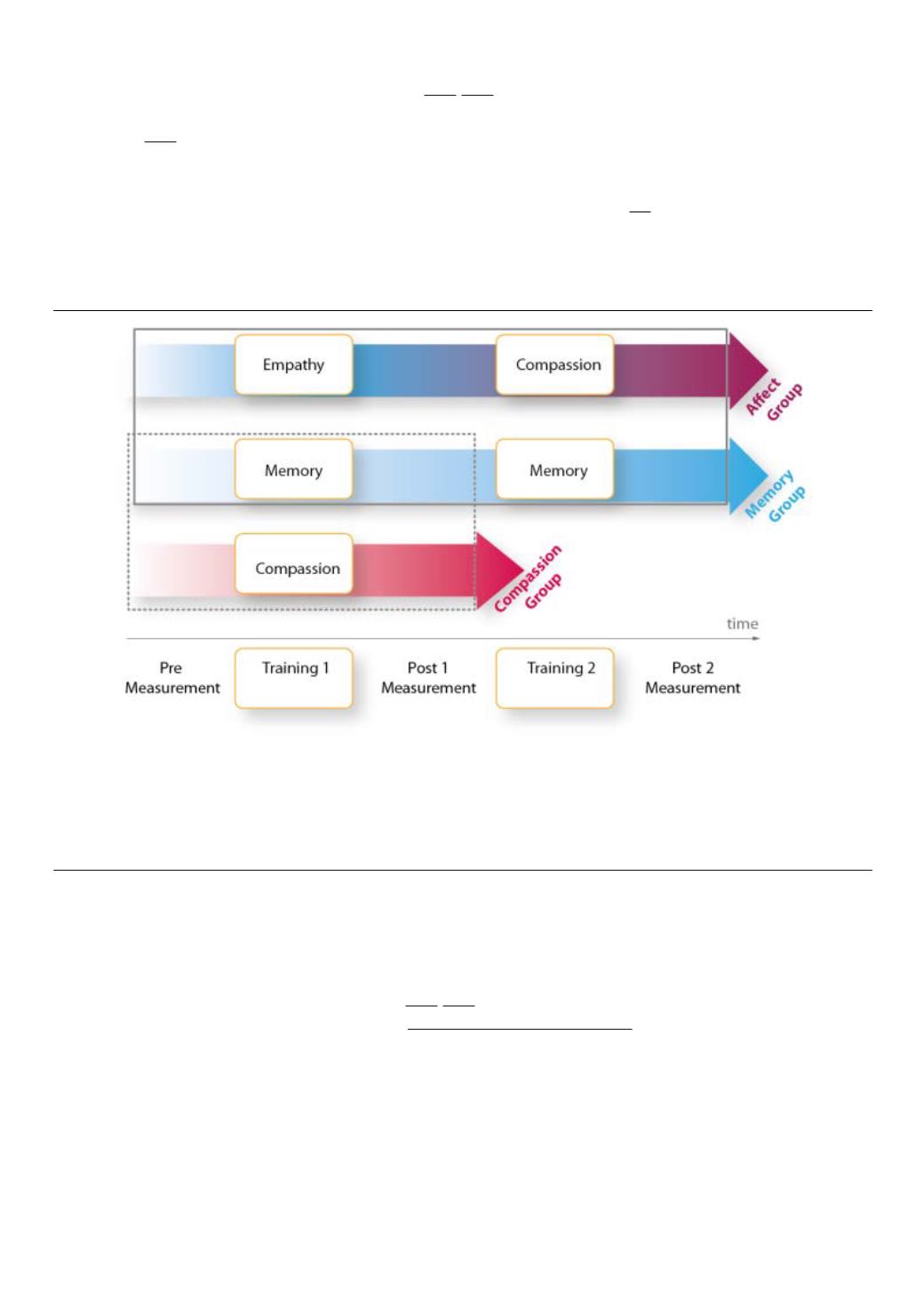
project, she conducted several short-term intervention studies that focused on the training of
empathy or loving-kindness and compassion
To reliably determine training-induced
changes in participants’ response to the distress of others, Olga Klimecki first developed a video-
based task
Using this task, each participant’s brain responses were measured while they
viewed short documentary video clips depicting people in pain or everyday life situations. After
each video, participants reported their positive and negative feelings, as well as their levels of
empathy. Consistent with many previous findings on empathy for pain
the participants’ initial
empathic responses to suffering were accompanied by activations in AI and aMCC. Moreover,
prior to training, seeing others in pain was associated with elevated levels of negative affect and
very low levels of positive affect.
Figure 4.
Design of the short-term empathy and compassion intervention studies. Participants were assigned to one of
three groups based on their temporal availability: the affect group, the memory group and the compassion group. The
dotted lines outline the longitudinal study, which compared the effects of compassion training (N = 28) with a matched
memory control group (N = 30; Klimecki et al., 2012). Another study (Klimecki et al., 2013) investigated changes
induced through training empathy and compassion (marked by a solid line). To this end, data from the affect
intervention (N = 25) group were compared to the memory group (N = 28).
After this first measurement, one group of participants received one day of compassion training,
while a matched control group received one day of memory training. The control group was
included to control for multiple testing and for unspecific training effects (like training in a group,
engaging in mental training over days and being involved in a scientific study). Compassion was
trained through loving-kindness meditation
which relies on sequentially extending feelings
of warmth and benevolence to others (see
.
Memory training focused on the Method of Loci, which improves one’s ability to memorize
sequences of words by associating them with particular locations. To maintain the training effects,
both interventions were complemented by additional practice sessions. The comparison of training
effects revealed that compassion training specifically increased self-reports of positive affect, even
in response to the distress of others (Figure 5). This is remarkable given that the cultivation of
compassion induced a positive attitude, which even extended to stimuli showing others suffering.
This change in quantitative ratings after each video was paralleled by qualitative first-person
reports collected after compassion training in which participants described “the feeling of warmth;
282


